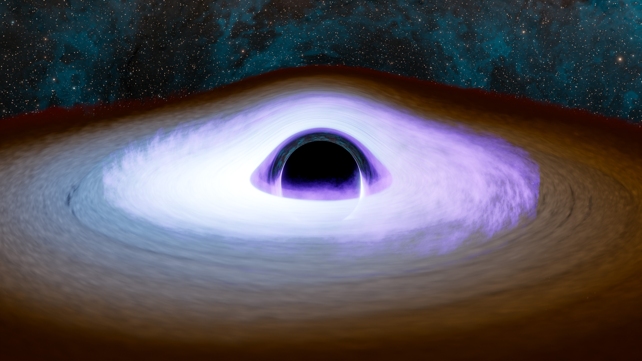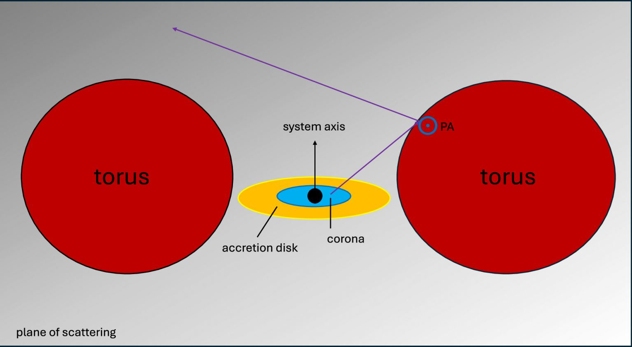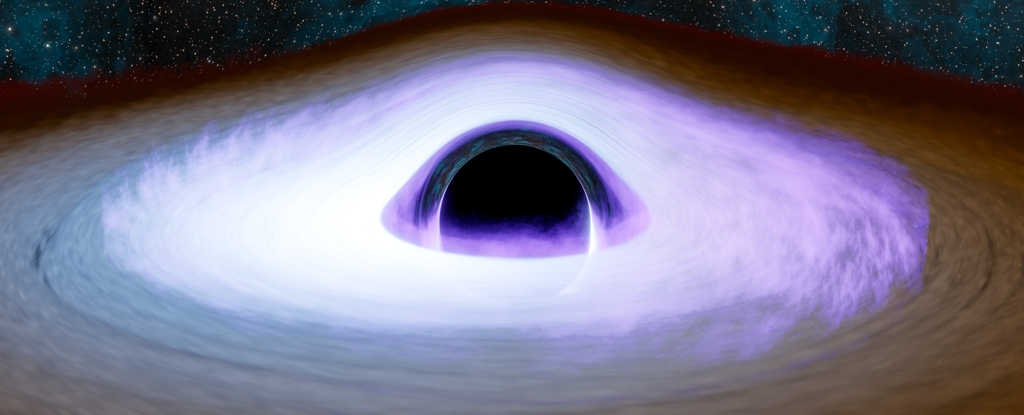Products You May Like
If you were lucky enough to observe a total eclipse, you are certain to remember the halo of brilliant light around the Moon during totality.
It’s known as the corona, and it is the diffuse outer atmosphere of the Sun. Although it is so thin we’d consider it a vacuum on Earth, it has a temperature of millions of degrees, which is why it’s visible during a total eclipse.
According to our understanding of black hole dynamics black holes should also have a corona. And like the Sun’s corona, it is usually difficult to observe. Now a study in The Astrophysical Journal has made observations of this elusive region.
For an active black hole, it’s generally thought that there is a donut-shaped torus of gas and dust surrounding the black hole, in which there is an accretion disk of heated material aligned along the rotational plane of the black hole.

Streaming from the polar regions of the black hole are jets of ionized gas speeding away at nearly the speed of light.
This model would explain the various types of active galactic nuclei (AGNs) we observe, since the orientation of the black hole relative to us changes the appearance of the AGN.
According to the model, the innermost region of the accretion disk should be a superheated region at near vacuum density, which streams into the black hole.
It is a corona like the Sun’s, but instead of millions of degrees, it has a temperature of billions of degrees. But because it’s so diffuse, its light is overwhelmed by the light of the accretion disk.
In this new study, the team used a trick similar to observing the Sun’s corona during a total eclipse.
The orientation of a black hole relative to us means that for some black holes the torus of gas and dust obscures our view of the accretion disk region, while for other black holes we can see the disk directly.

These are known as obscured and unobscured black holes. The obscured black holes are similar to an eclipsed Sun, since the light of the accretion disk is blocked from view.
Unfortunately, so is the black hole’s corona. But the corona is so hot that it emits extremely high-energy X-rays. These X-rays can scatter off material in the torus and reflect into our line of site.
Using data from NASA’s Imaging X-ray Polarimetry Explorer (IPXE), the team gathered data on a dozen obscured black holes, including Cygnus X-1 and X-3 in the Milky Way, and LMG X-1 and X-3 in the Large Magellanic Cloud.
They were not only able to observe scattered X-rays from the coronas of these black holes, they were also able to detect a pattern among them.
Based on the data, the corona surrounds the black hole in a disk similar to the accretion disk, rather than surrounding the black hole in a sphere similar to the Sun’s corona.
Research such as this will help astronomers refine our models of black holes. It will also help us better understand how black holes consume matter and power the AGNs we observe in distant galaxies.
This article was originally published by Universe Today. Read the original article.
